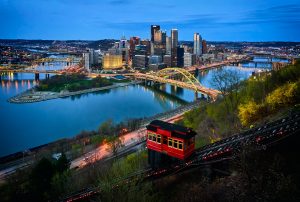Understanding the Different Types of Cremation Options
Understanding the Different Types of Cremation Options

There are several different types of cremation that a person can choose when planning their final resting arrangements. These cremation options can all be used as part of the same process, or they can also be selected separately. The primary differences between these cremation options are the type of container used to hold the cremated remains, the rituals around the cremation, and whether or not a memorial service is held.
Here’s a look at the different cremation options, which one might be best for you, and why.
Traditional Cremation
Traditional cremation is the process that most people are familiar with. It is the most common type of cremation, accounting for over 90% of all cremations in the United States. With traditional cremation, a funeral home or crematory burns a deceased person’s body. The remains are placed in an urn, and then the ashes are scattered at the discretion of the crematory. A memorial service may or may not be held at the burial site.
Alternative to Cremation
Alternative to cremation is one of two more minor common types of cremation. It is only available in certain parts of the country and is only available to those who want to make their funeral arrangements without a cemetery or funeral home. Alternative to cremation involves the burial of the urn at a non-denominational, non-traditional cemetery with no services. The person should then arrange to have the urn transferred to a private crypt or above-ground mausoleum.
Green Burial
A green burial is another option that is only available in certain areas. A body is cremated with a green burial, and the ashes are buried in a non-traditional location. The location can be a piece of land that the person owns, a public park, or even on private property with the owner’s permission. The grave site is unmarked, and the person is buried in a green burial urn.
Resomation
Resomation is another form of alternative cremation, often available only in areas where green burial is not allowed. With a resomation, a body is dismembered, and the parts are then scattered at a non-traditional location. Resomation can be used as part of a death-rebirth cycle, alchemical themes, meditative practices, or intervention against social decay.
Memorial Service
A memorial service is another option that is available in all areas. With a memorial service, a church or other religious institution performs a ceremony to honor and remember the person. A casket may or may not be used. The service may be followed by a burial or cremation of the remains.
Final Thoughts
Cremation has become increasingly popular as a final resting arrangement. It is a quick, inexpensive, and painless way to say goodbye to a deceased loved one. Different cultures have different cultural norms and traditions around death and the deceased, affecting which types of cremation are chosen. In some parts of the world, it may be preferred that the deceased not be scattered in an attempt to keep their remains close so that they may be remembered and honored. A funeral home or crematory operator can help the family with these choices and make the process seamless and painless.
Cremation is the process of burning a person’s body, either whole or in part, to obtain the ashes or bones. There are several types of cremation services in Pittsburgh, each with its own benefits.
Traditionally, a body is burned on a funeral pyre, with the remains then buried in an urn. This cremation also called complete cremation, is the most common.
In fractional or partial cremation, only part of a body is burned. The ashes are then placed in an urn or, in some cases, a temporary container such as an urn or urn basket. Another type of cremation is known as green or eco-friendly cremation. This is when the body is naturally decomposing, and the cremation process does not involve burning the body at all.